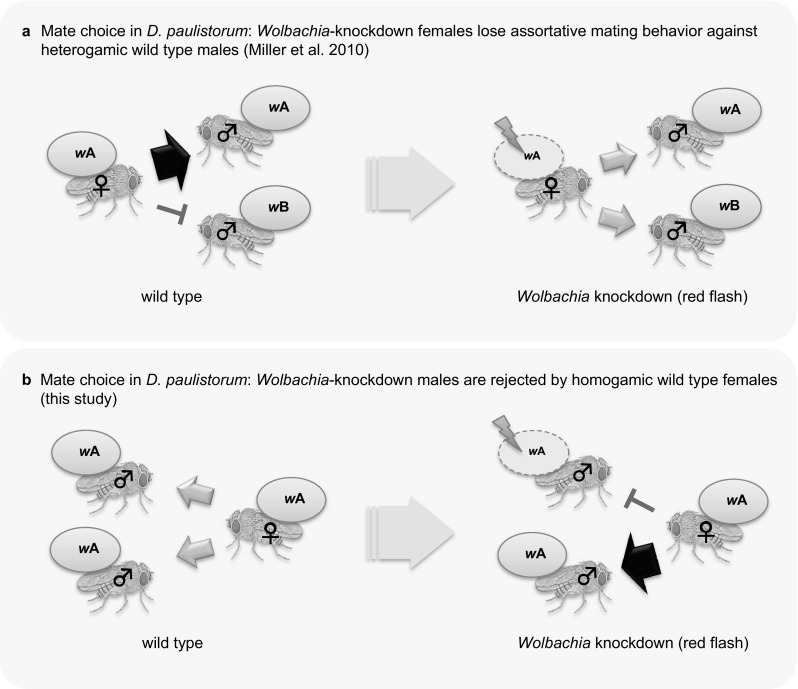Fig. 1.

Impact of Wolbachia on mate choice in D. paulistorum. a Mate choice in D. paulistorum: Wolbachia-knockdown females lose assortative mating behavior against heterogamic wild type males. Left: wild type females (blue) infected with Wolbachia A (wA) express strong assortative mating behavior (red block) against males of a different semispecies (red) carrying a different, incompatible Wolbachia (wB). Right: Wolbachia kd females (symbolized with red flash) with reduced titers of wA lose assortative mating behavior (grey arrows) and hence mate randomly with males from same (blue) but also from different/incompatible (red) semispecies. Female knockdown phenotype: loss of assortative mating behavior. Data taken from (Miller et al. 2010). b Mate choice in D. paulistorum: Wolbachia-knockdown males are rejected by homogamic wildtype females. Left: wild type males are accepted randomly (grey arrows) for mating by females of the same semispecies (all blue), carrying the same/compatible Wolbachia (both wA). Right: Wolbachia kd males (indicated by red flash) with reduced titers of wA are rejected as mate partners (red block) from wild type females of the same semispecies. Thickness of arrows indicates strength of mate choice between partners: thick black arrow = high mate preference, red block = assortative mating, and grey medium arrow = lack of mate choice, i.e., random mating. kd knockdown. (Color figure online)
